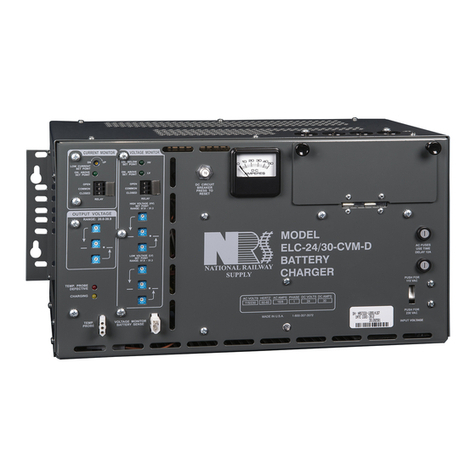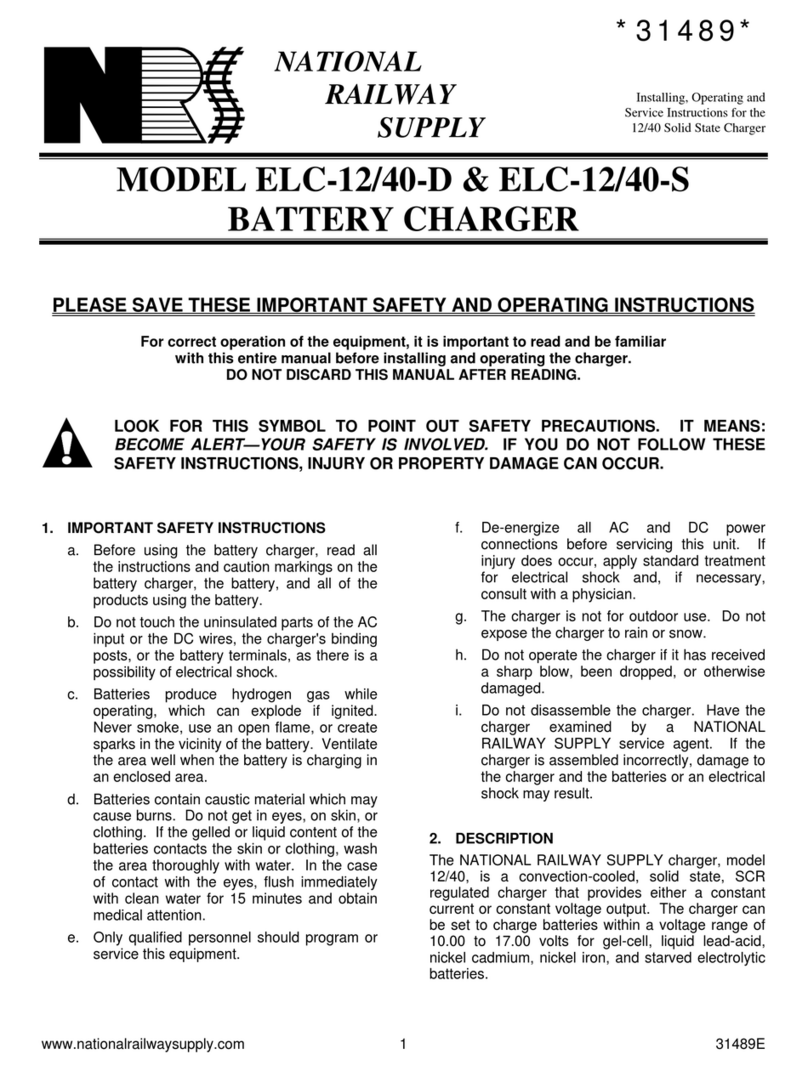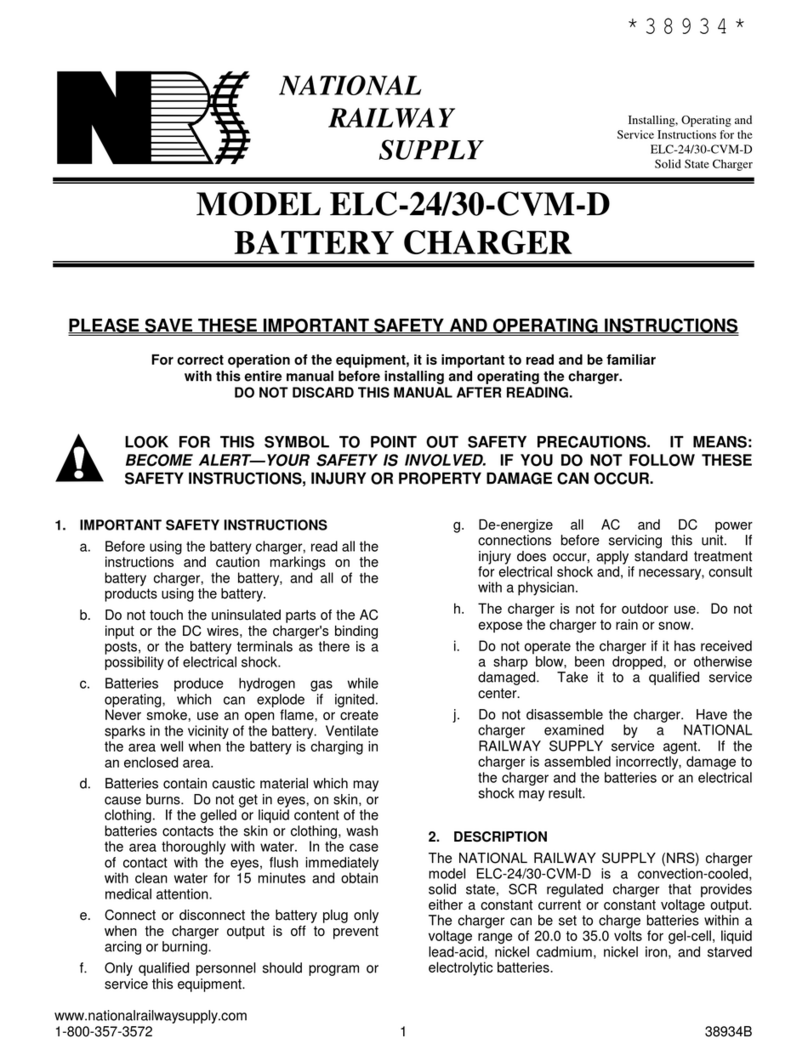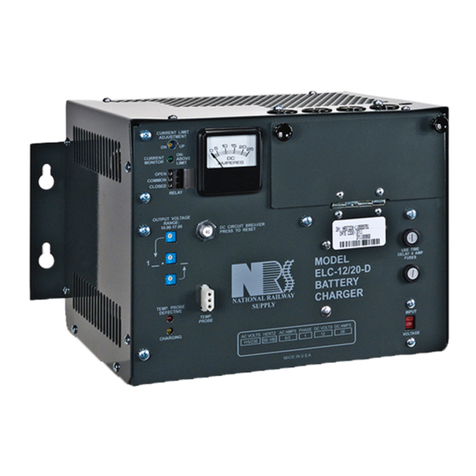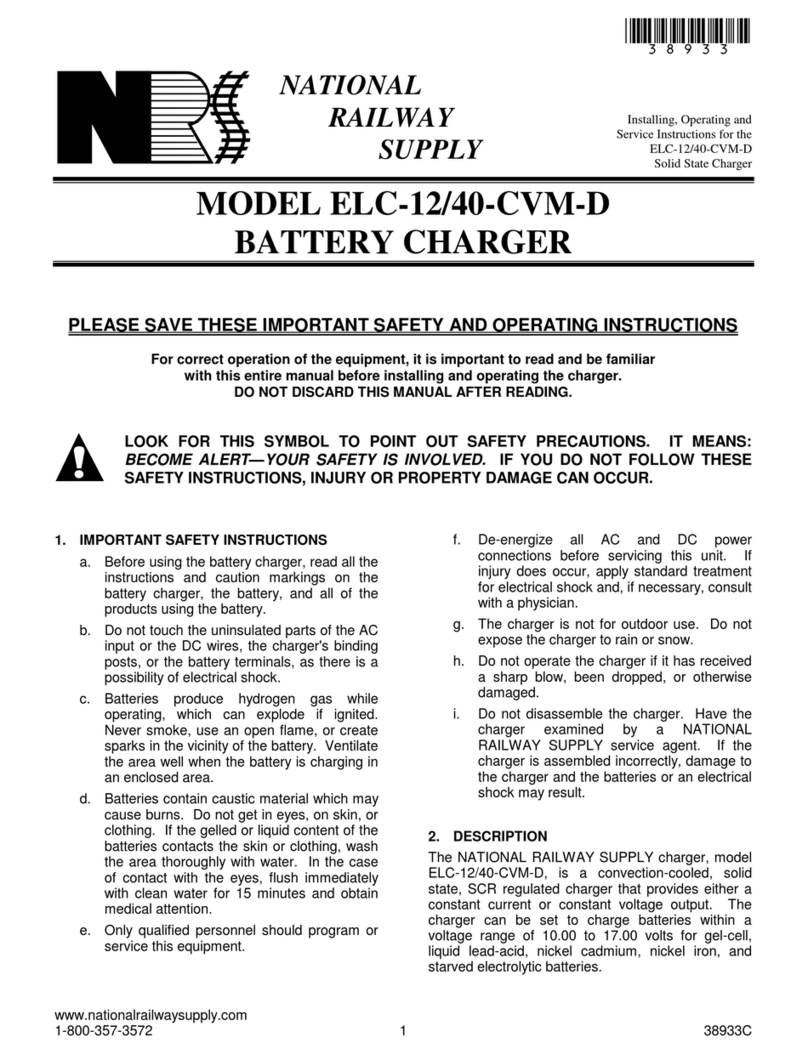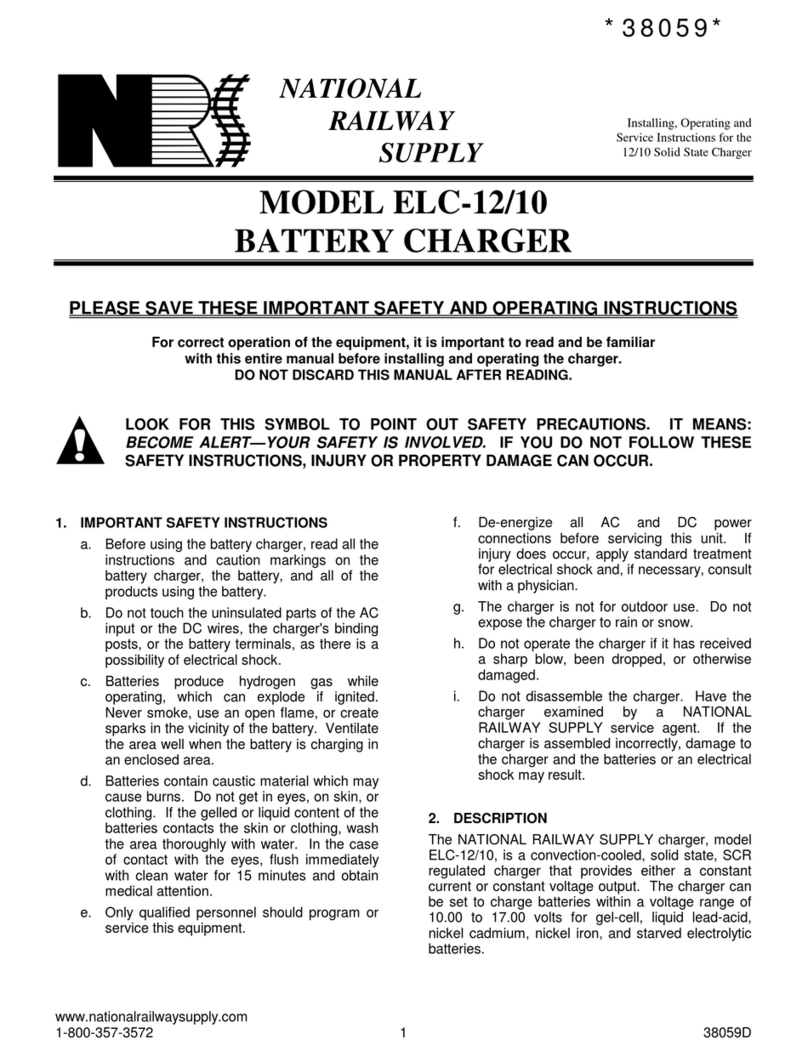
www.nationalrailwaysupply.com
1-800-357-3572 4 38542D
5. AC ELECTRICAL SUPPLY
The charger must be connected to a single-phase,
50/60 Hertz AC power source, which can be either
115 or 230 VAC depending on the charger input
voltage selection switch setting. Use an appropriate
size wire for the conditions and for the AC amperage
shown on the ratings information on the charger.
Quarter-inch (1/4") ring terminals are required for
proper connection to the AC input and ground
binding posts (A.A.R.) located on the front of the
charger. Open the small door cover on the front of
the charger by pulling out on the push tabs. Connect
the AC power terminals on the two posts on the right,
as marked on the panel behind the posts. Connect
the AC ground to the terminal lug provided.
WARNING: FAILURE TO PROPERLY
CONNECT THE AC VOLTAGE CONDUCTORS
COULD CAUSE SERIOUS DAMAGE TO THE
CHARGER. BE SURE TO SET THE VOLTAGE
SELECTION SWITCHES ON THE FRONT OF THE
CHARGER TO THEIR PROPER POSITION.
WARNING: DO NOT OPERATE THE
CHARGER WITHOUT PROPER GROUNDING.
IMPROPER GROUNDING CAN RESULT IN THE
RISK OF AN ELECTRIC SHOCK.
6. DC OUTPUT
The DC output wires, are connected on the two left-
most binding posts as labeled on the panel behind
the binding posts (positive on the left and negative
on the right). The DC cables should have quarter-
inch (¼") ring terminals for connecting them to the
binding posts. Check to make sure the polarity of
the DC output wires is the same as those connected
to the battery. The charger will not operate in a
reversed polarity condition. WHEN CONNECTING
THE DC WIRES TO THE CHARGER WITH THE AC
POWER DISCONNECTED, A SPARK MAY
OCCUR. This is caused by the output capacitors
being charged by the batteries. If the DC polarity is
reversed, a circuit breaker will protect the charger
from internal damage. Correct the reversed wires
and push the circuit breaker button back in. Replace
the door cover on the front of the charger after
tightening all of the binding post nuts.
WARNING: DO NOT TOUCH THE
CHARGER'S TERMINALS OR AN ELECTRICAL
SHOCK COULD OCCUR. A VOLTAGE IS
PRESENT ON THE DC TERMINALS EVEN AFTER
THE AC IS DISCONNECTED BECAUSE OF THE
ENERGY STORED IN THE CAPACITOR.
7. TEMPERATURE PROBE
The external temperature probe is an optional way of
extending battery life by using temperature
compensation. One end of the temperature probe
cable has a three-pin plug, which plugs into a
receptacle labeled TEMP PROBE on the front of the
charger. The other end of the cable has the
temperature sensor sealed either in a terminal or
small metal box.
WARNING: IT IS IMPORTANT TO MOUNT
THE TEMPERATURE PROBE ON THE
BATTERIES FOR PROPER TEMPERATURE
COMPENSATION. IF THIS CANNOT BE DONE,
LOCATE THE PROBE AS LOW AS POSSIBLE IN
THE BUNGALOW OR CABINET.
Terminal-Type Probe
The terminal-type probe should be attached to the
negative (-) battery post near the center of the
battery pack. If the threaded stud is long enough
above the battery jumper nut, attach the probe with
another nut. Torque this nut to proper specifi-
cations. If the stud is too short, the nut holding the
jumper wire will need to be removed. Open or
remove the load and charging circuits to the
batteries. Remove the nut holding the jumper and
add the probe, then torque the nut to the proper
specifications. Then close or connect the load and
charging circuits back to the batteries.
Securely fasten the temperature probe cable to
protect the probe from being torn from the
battery. Secure the probe's cable to a fixed object
to ensure the probe will not be pulled loose. Use a
cable tie mount on the battery or on the adjacent
battery, if necessary.
8. OPERATION
The battery charger is adjustable with the three
rotary switches on the front of the charger. The
switches (settable between 20.0 and 35.0) determine
the float voltage for the batteries. SET THE FLOAT
VOLTAGE TO THE BATTERY MANUFACTURER'S
SPECIFIED VOLTAGE FOR 77F. The charger will
then electronically charge the batteries to the voltage
specified on the switches. To set the switches, use
a small screw-driver and turn the switch so that the
arrow head on the slot is pointing to the desired
number. Set the switches in the following manner. If
the desired battery voltage is 26.8 volts, set the top
switch to 2, the middle switch to 6, and the bottom
switch to 8 (see the figure below). This will provide
you with the proper charging voltage. BE SURE
EACH SWITCH IS SET ON A NUMBER AND NOT
BETWEEN NUMBERS. If a switch is set between
numbers, the output current will go to zero and the
yellow charging LED will flash.

